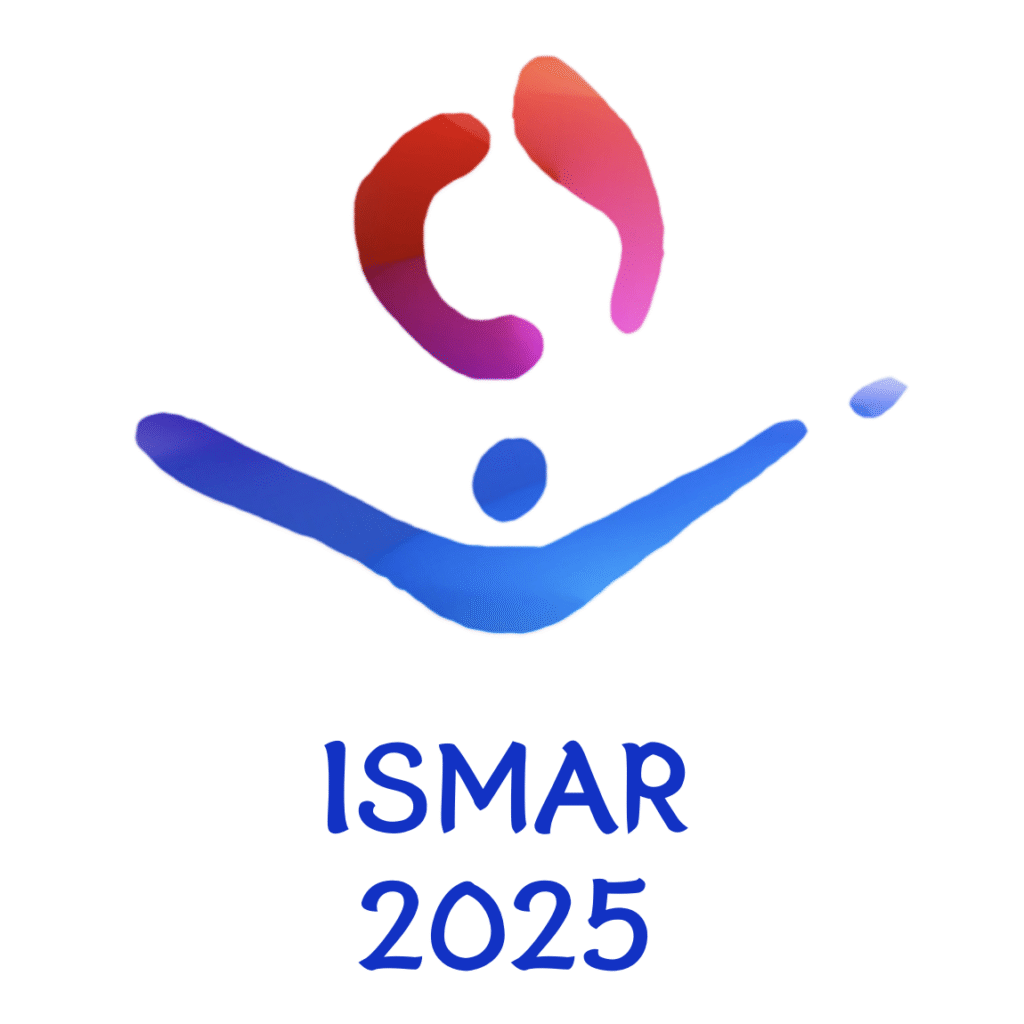
The 3D Interaction Group would like to acknowledge its member’s contributions to ISMAR 2025.
XRWORKS Workshop Keynote – “Intelligent XR for the Future of Knowledge Work”
Presented by Doug Bowman
Revisiting Performance Models of Distal Pointing Tasks in Virtual Reality
Logan Lane, Feiyu Lu, Shakiba Davari, Rob Teather, Doug Bowman
Abstract: Performance models of interaction, such as Fitts’ law, are important tools for predicting and explaining human motor performance and for designing high-performance user interfaces. Extensive prior work has proposed such models for the 3D interaction task of distal pointing, in which the user points their hand or a device at a distant target in order to select it. However, there is no consensus on how to compute the index of difficulty for distal pointing tasks. We present a preliminary study suggesting that existing models may not be sufficient to model distal pointing performance with current virtual reality technologies. Based on these results, we hypothesized that both the form of the model and the standard method for collecting empirical data for pointing tasks might need to change in order to achieve a more accurate and valid distal pointing model. In our main study, we used a new methodology to collect distal pointing data and evaluated traditional models, purely ballistic models, and two-part models. Ultimately, we found that the best model used a simple Fitts’-law-style index of difficulty with angular measures of amplitude and width.
Exploring Organizational Strategies in Immersive Computational Notebooks
Sungwon In, Ayush Roy, Eric Krokos, Kristen Whitley, Chris North, Yalong Yang
Abstract: Computational notebooks, which integrate code, documentation, tags, and visualizations into a single document, have become increasingly popular for data analysis tasks. With the advent of immersive technologies, these notebooks have evolved into a new paradigm, enabling more interactive and intuitive ways to perform data analysis. An immersive computational notebook, which integrates computational notebooks within an immersive environment, significantly enhances navigation performance with embodied interactions. However, despite recognizing the significance of organizational strategies in the immersive data science process, the organizational strategies for using immersive notebooks remain largely unexplored. In response, our research aims to deepen our understanding of organizations, especially focusing on spatial structures for computational notebooks, and to examine how various execution orders can be visualized in an immersive context. Through an exploratory user study, we found participants preferred organizing notebooks in half-cylindrical structures and engaged significantly more in non-linear analysis. Notably, as the scale of the notebooks increased (i.e., more code cells), users increasingly adopted multiple, concurrent non-linear analytical approaches.
